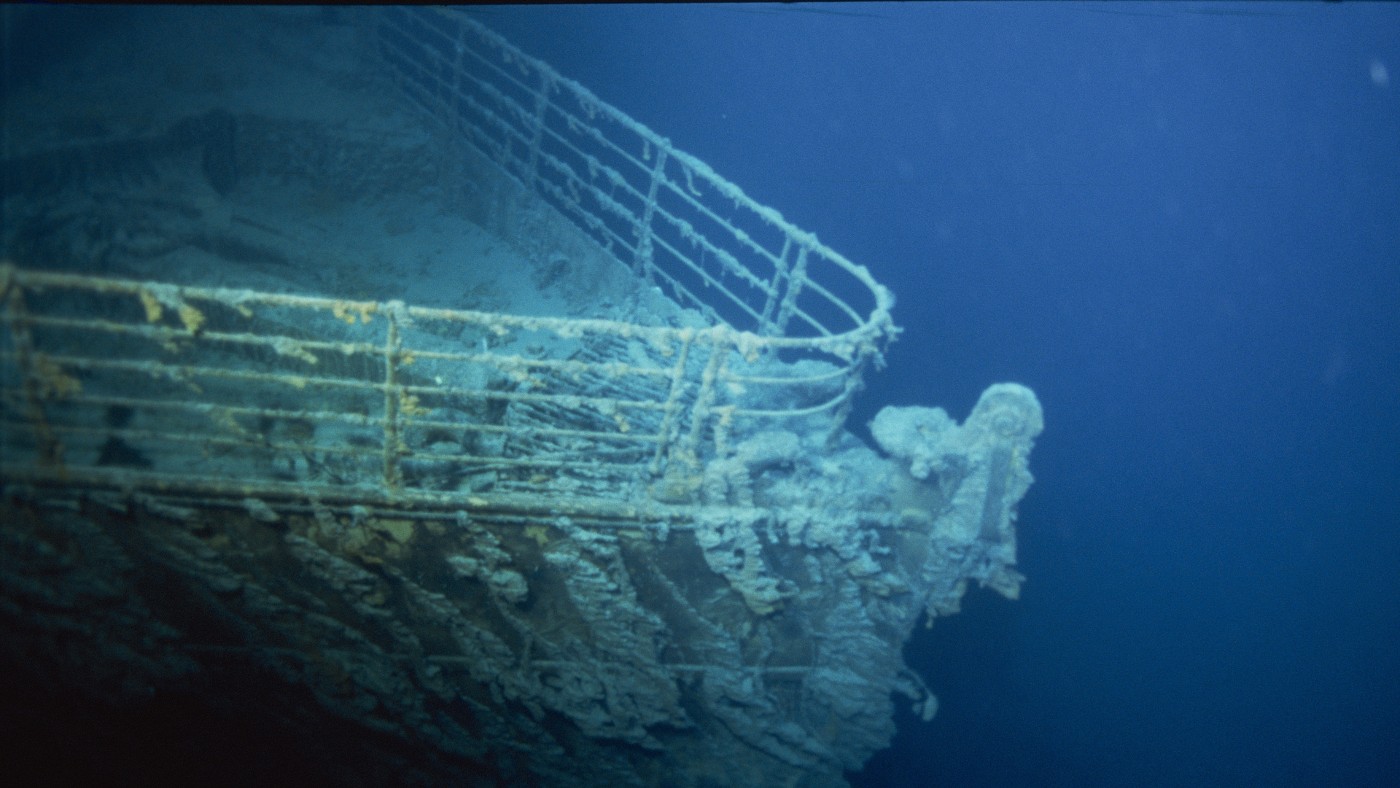What happened to the missing Titanic sub?
Oxygen supplies running out after vessel lost contact during ‘daredevil’ trip

Search teams and rescuers are racing against time to find a tourist submersible that went missing during a dive to the wreck of the Titanic.
Five people were on board the Titan when contact with the small sub was lost about an hour and 45 minutes into the dive on Sunday. The vessel has a 96-hour oxygen supply in “case of emergencies”, Sky News reported - leaving around two days of “life support” for the passengers.
What did the papers say?
The submersible went missing in the Atlantic, 435 miles south of Newfoundland in Canada, during a descent to the “iconic wreck”, which sits at a depth of 3,800 metres, said Toronto Star. The passengers “were aiming to be among the very small clique of those to have ever laid eyes on the Titanic” since the ship sank in 1912, the paper added.
The Week
Escape your echo chamber. Get the facts behind the news, plus analysis from multiple perspectives.

Sign up for The Week's Free Newsletters
From our morning news briefing to a weekly Good News Newsletter, get the best of The Week delivered directly to your inbox.
From our morning news briefing to a weekly Good News Newsletter, get the best of The Week delivered directly to your inbox.
What went wrong remains unclear, but experts have offered some “likely scenarios”, said The Guardian, ranging from “becoming tangled in wreckage of the Titanic” to a power failure or a problem with the sub’s communications system.
The missing passengers are widely reported to be British billionaire businessman and explorer Hamish Harding; Pakistani businessman Shahzada Dawood and his son, Suleman; French explorer Paul-Henry Nargeolet; and Stockton Rush, chief executive of OceanGate, the company that owns the missing sub.
The “pricey” and “daredevil” expedition is an eight-day experience arranged by OceanGate Expeditions that costs $250,000 a ticket, said the New York Post.
A New York-based writer who took a trip on the Titan sub last year said that “you all know what you are getting into” when you sign up.
A free daily email with the biggest news stories of the day – and the best features from TheWeek.com
Passengers “sign a massive waiver that lists one way after another that you could die on the trip”, Mike Reiss told BBC Breakfast. “They mention death three times on page one so it’s never far from your mind,” he added.
What next?
Officials have sent two C-130 Hercules aircraft to search for the submersible on the surface of the water, and an underwater sonar search is also under way.
The hunt is “complex” because crews do not know if the vessel has surfaced, said Rear Admiral John Mauger, first district commander of the US Coast Guard, who is overseeing the operation.
The Titan has drop weights, which can be released in an emergency, creating enough buoyancy to take it to the surface, where “an array of signals, lighting, reflectors and other equipment” can be used to attract attention, said The Guardian. However, experts told the paper that if there has been a leak in the pressure hull, “the prognosis not good”.
According to CNN meteorologists, the area is seeing “choppy seas” and foggy conditions, causing problems for search parties. And “depending where and at what depth” the sub might be found, there could be “limited options” for rescue vessels, said the site. US Navy submarines usually operate at 800ft or less, and might “implode” at lower depths due to water pressure.
But the Navy does have specialised rescue submersibles that can go to depths up to 2,000 feet.
The “daring rescue” would be “the deepest recovery mission in history” if crews are able to “pull it off” before the vessel runs out of oxygen, said the New York Post.
The disappearance is fuelling an “ongoing debate in scientific circles” about the “relative merit of manned submersibles”, because “each deployment incurs a safety risk”, wrote Stefan B. Williams, an expert on marine robotic systems, on The Conversation.
Joe MacInnis, a member of the first expedition to locate the wreck of the Titanic, in 1985, told The Guardian that “this is the day that we have been fearing for a long, long time – when you lose a sub in really deep water”.
CBS journalist David Pogue, who did the dive last year, told the BBC that it is not possible for those aboard the sub to escape without help, because they are sealed inside by several bolts applied from the outside. “There’s no backup, there’s no escape pod,” he said. “It’s get to the surface or die.”
Chas Newkey-Burden has been part of The Week Digital team for more than a decade and a journalist for 25 years, starting out on the irreverent football weekly 90 Minutes, before moving to lifestyle magazines Loaded and Attitude. He was a columnist for The Big Issue and landed a world exclusive with David Beckham that became the weekly magazine’s bestselling issue. He now writes regularly for The Guardian, The Telegraph, The Independent, Metro, FourFourTwo and the i new site. He is also the author of a number of non-fiction books.
-
 5 fairly vain cartoons about Vanity Fair’s interviews with Susie Wiles
5 fairly vain cartoons about Vanity Fair’s interviews with Susie WilesCartoon Artists take on demolition derby, alcoholic personality, and more
-
 Joanna Trollope: novelist who had a No. 1 bestseller with The Rector’s Wife
Joanna Trollope: novelist who had a No. 1 bestseller with The Rector’s WifeIn the Spotlight Trollope found fame with intelligent novels about the dramas and dilemmas of modern women
-
 Codeword: December 20, 2025
Codeword: December 20, 2025The daily codeword puzzle from The Week
-
 'Angel' visits woman before lottery win
'Angel' visits woman before lottery winTall Tales And other stories from the stranger side of life
-
 Doomsday group offers 'epic' survival opportunity
Doomsday group offers 'epic' survival opportunityTall Tales And other stories from the stranger side of life
-
 Titanic VHS collector aims for one million copies
Titanic VHS collector aims for one million copiesTall Tales And other stories from the stranger side of life
-
 Would North Korean weapons tilt the war Russia’s way?
Would North Korean weapons tilt the war Russia’s way?Today's Big Question Putin wants to boost ‘depleted stocks’ but Pyongyang’s arms may be in poor condition
-
 What went wrong with the German economy?
What went wrong with the German economy?Today's Big Question ‘Deep-rooted’ and ‘knotty’ problems threaten return of ‘sick man’ label
-
 Why are so many local councils on the brink of bankruptcy?
Why are so many local councils on the brink of bankruptcy?Today's Big Question Inflation, underfunding and growing demand for services has put pressure on local authorities at the worst time
-
 UFO hearing: why is Washington suddenly embracing aliens?
UFO hearing: why is Washington suddenly embracing aliens?Today's Big Question Speculation of extraterrestrial life has moved from ‘conspiracy fringe’ to Congress
-
 Can the Ukraine-Russia Black Sea grain deal be rescued?
Can the Ukraine-Russia Black Sea grain deal be rescued?Today's Big Question The Kremlin’s termination of agreement has sparked fears among food-insecure countries